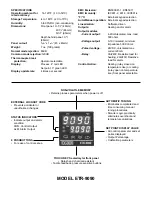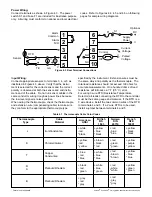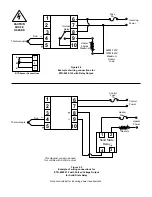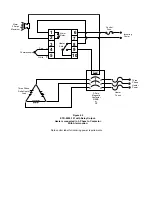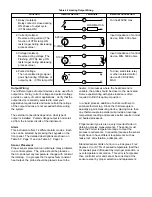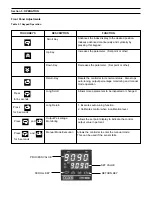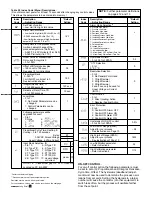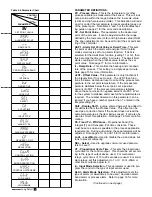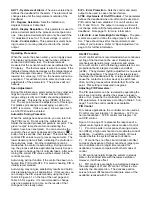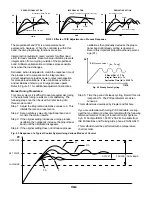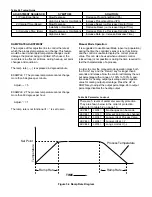
Ramp and Soak Function
The ETR-9090 can be programmed as either a fixed set
point controller or as a two segment ramp and soak
control. The ramp-up rate is determined by the “rr”
setting. This setting can be adjusted in the range of
0-360°F (200°C) per minute. The ramp rate function is
disabled if the “rr” is set to 0. The soak function is
accomplished by configuring the alarm relay to act as
timer. To use this function, set ALA1 to 12. The alarm
relay will be closed at start-up and it will stay closed
until the process temperature has remained at the set
point temperature for the time period set in ASP1. The
ASP1 setting is in minutes. When the alarm relay
opens, the process temperature will drop at an
uncontrolled rate. The heater power must be wired in
series from the main relay through the alarm relay. The
control will now operate as a guaranteed soak control.
Please note the following example: The ramp rate “rr”
is set to 5°F per minute. The ALA1 is set to 12, and the
ASP1 is set to 30 (minutes). When the unit is turned
on, the process will climb at 5°F per minute to the set
point of 175°F. Once the set point has been reached,
the timer will activate. After 30 minutes, the alarm
relay will open. The process temperature falls. The
process will repeat every time power has been switched
off and on to the controller. See Diagram 1 at right.
175
150
125
100
75
0
20
40
60
80
90
°
F
30 Minutes
Alarm Relay
OFF
TIME/Minutes
10
30
50
70
ON
Process Value
= 12
= 30
175
150
125
100
75
0
20
40
60
80
90
°
F
30 Minutes
Alarm Relay
OFF
TIME/Minutes
10
30
50
70
ON
Process Value
= 13
= 30
Set point
DIA. 2 Single Event
Single Event Function
The single event function may be used to control
external devices such as lights, bells or locks. It could
also be used to alert the operator when a guaranteed
soak time has been reached. To use this function, set
ALA1 to 13. The alarm relay will now operate as a
timer. The relay will be open at start-up. Once the set
point temperature has been reached and the time
period set in ASP1 has elapsed, the alarm relay will
close. The relay will remain closed until power to the
Table 5.7 (Continued)
Descriptions of Alarms
Process High Alarm: Alarm is actuated whenever the process value rises above the alarm set point. Changing
the control set point does not affect the process alarm trip point.
Process Low Alarm: Alarm is actuated whenever the process value falls below the alarm set point. Changing
the control set point does not affect the process alarm trip point.
Deviation High Alarm: Alarm is actuated whenever the process value goes above the control set point by a
predetermined (alarm Value) amount. Changing the control set point changes the alarm set point value
maintaining the same deviation from the control set point.
Deviation Low Alarm: alarm is actuated whenever the process value falls below the control set point by a
predetermined (alarm Value) amount. Changing the control set point changes the alarm set point value
maintaining the same deviation from the control set pint. This alarm value is a negative number.
Inhibited alarms do not energize the alarm relay the first
time the process temperature enters the alarm area.
From the second time the process temperature enters
the alarm area, the Inhibited Alarm offers ON as a nor-
mal alarm. For some systems, it is useful to bypass the
first alarm section while the system is heating up.
control has opened. The cycle will repeat each time the
control is energized. Note Diagram No. 2 below.
DIA. 1 Ramp and Soak

